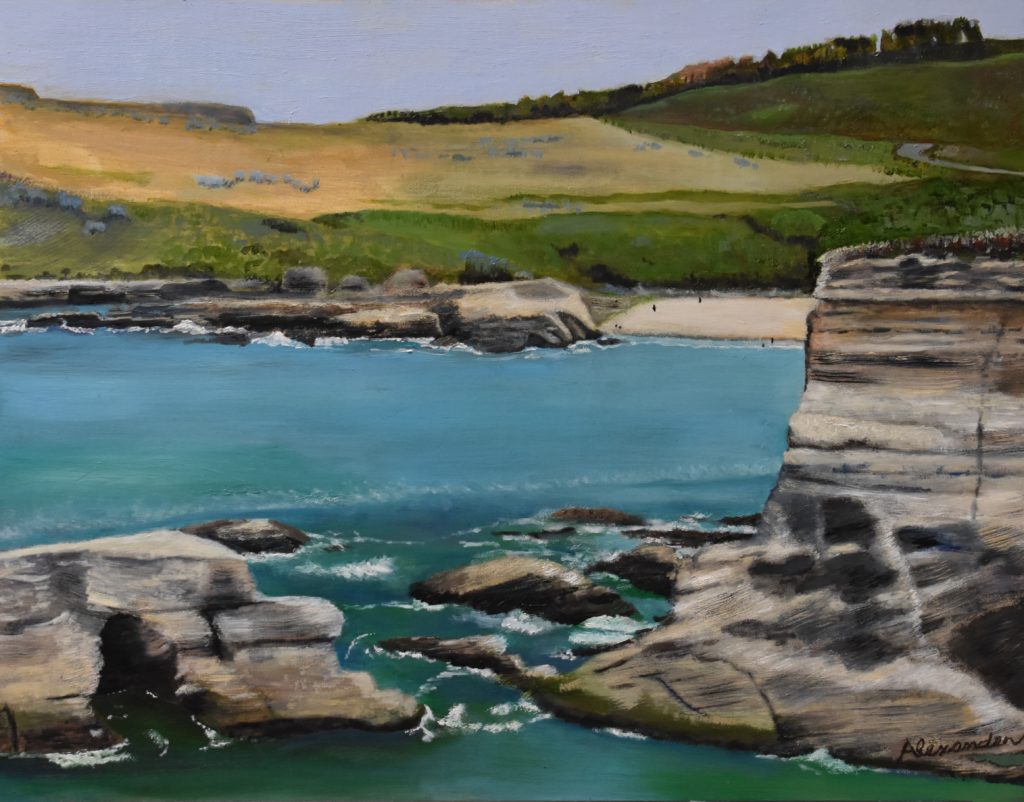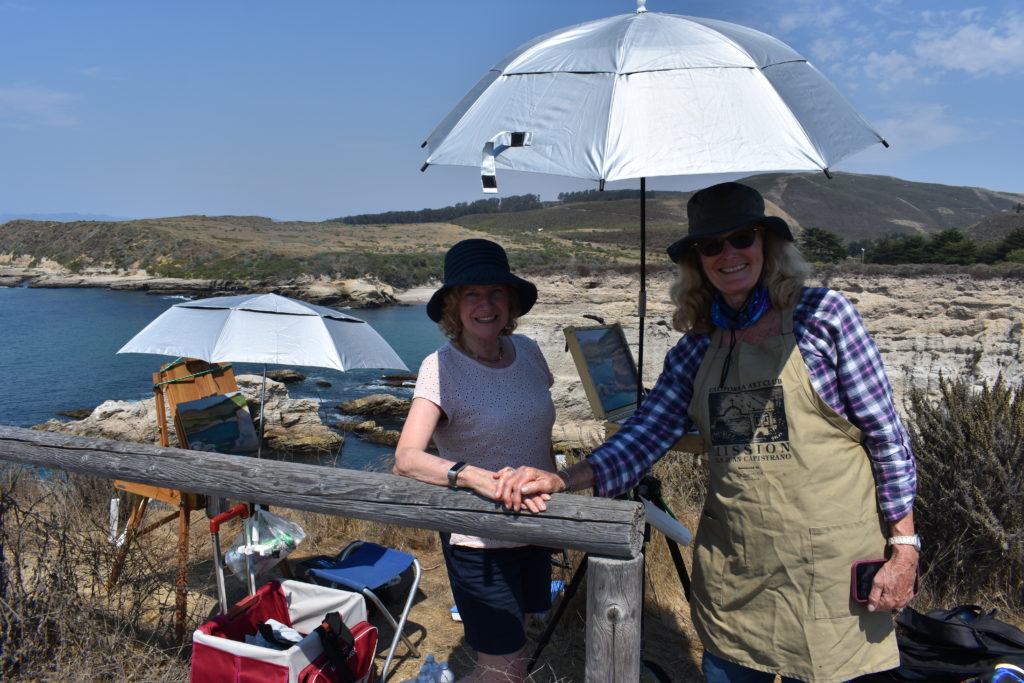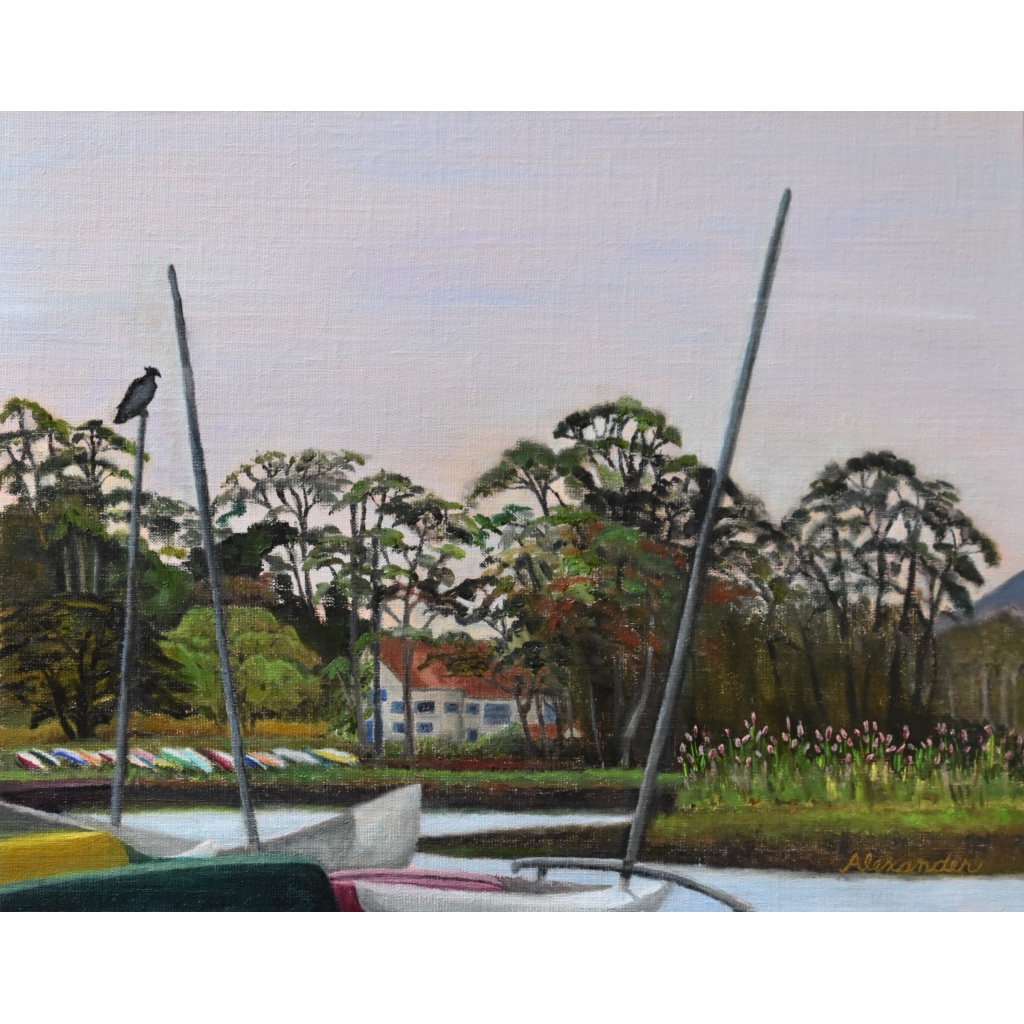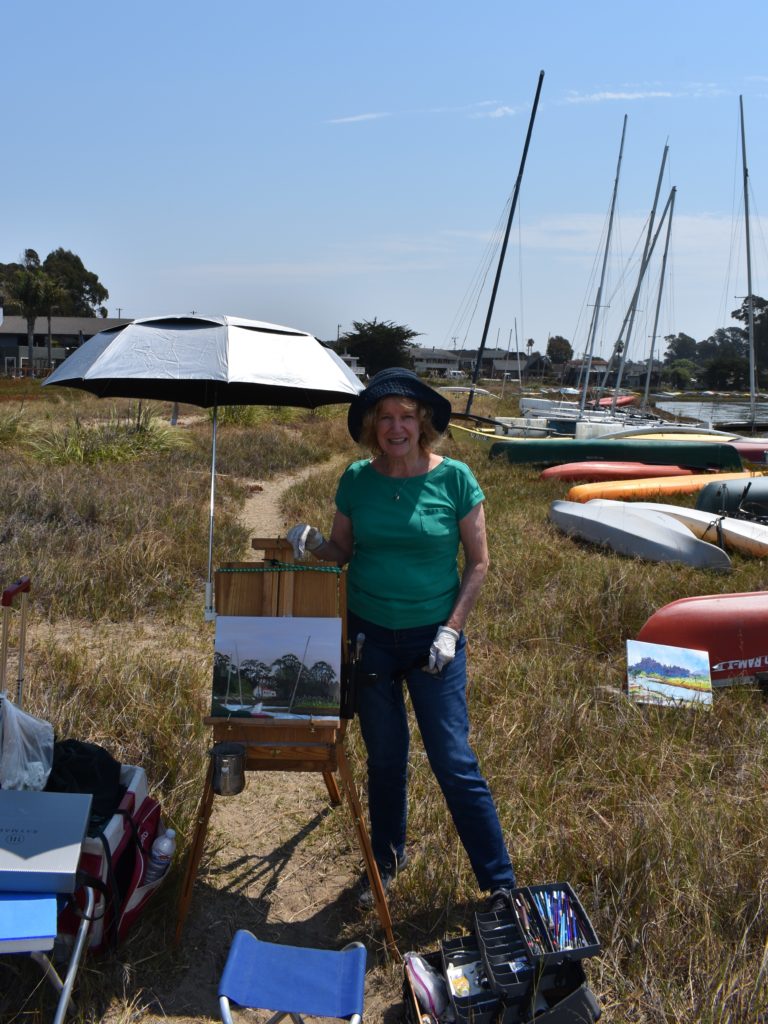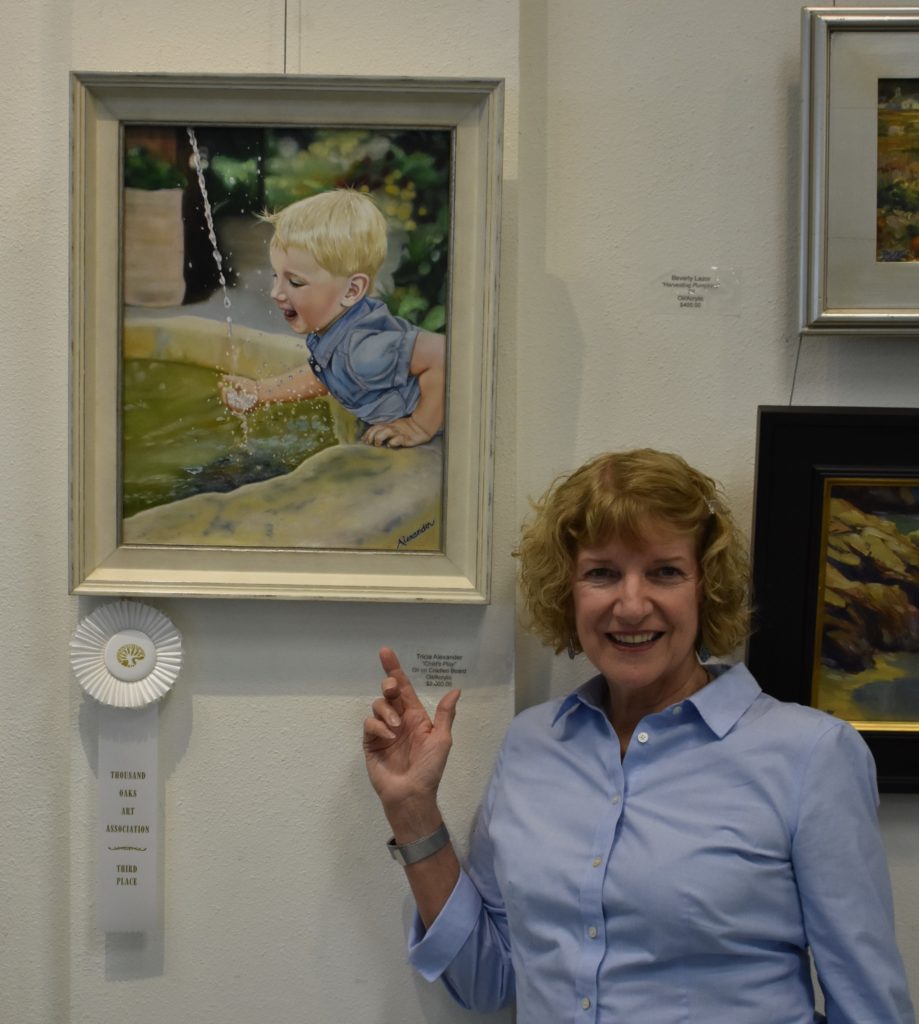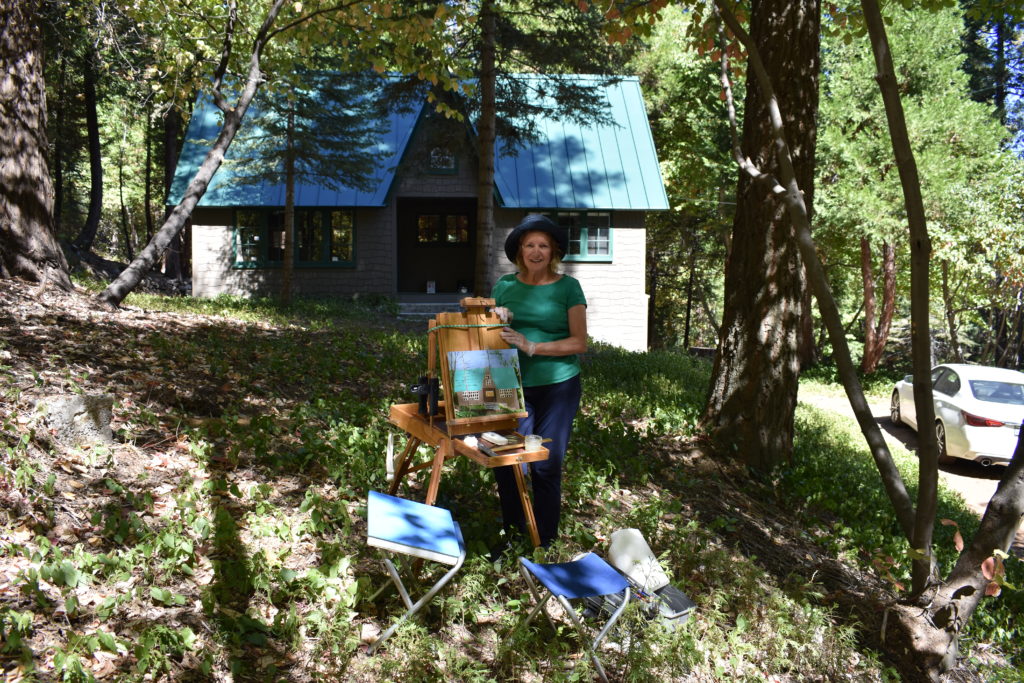
Just about any town that has more than a handful of artists is likely to have a local art group. When I decided to take myself seriously as an artist, one of the first things I did was join an art group. I have benefitted from doing so and have seen that the same is true for the other art group members. Here is a list of benefits to being an art group member: Group members…
1. Socialize and make new friends. Most artists work in solitude. Creating art means being in the studio, concentrating for hours, with little opportunity for interaction with others. Art group meetings provide an opportunity to interact with other artists, get input from them, and share your common interests.
With access to a supportive art group, full of potential friends, you can experience so much that the art world has to offer. Some art clubs have plein air groups and field trips. Museums are the perfect place to get ideas and expand your artistic repertoire. Not only can you visit art shows and festivals with fellow group members but also you can organize and participate in shows together.
2. Enjoy common interests. You are likely to have a great deal in common with other artists, especially in groups welcoming a particular type of medium, such as painting or pastels. The key to finding a satisfying artist group is to seek people like yourself. When you are looking to join an artist group, try to find a group with similar interests, goals, and skill levels as your own.
Being an artist can mean a lot of things: being a painter, sculptor, photographer, potter, graphic designer, printmaker, and so on. If you are a painter, joining a group that specializes in pottery will most certainly be a mismatch. Even interests among artists of the same medium can vary widely. For example, if you are primarily interested in painting landscapes, you might not be terribly enthused with a still life art group. If you are a photo-realist, you may find yourself at odds in a group that favors abstract expressionism. Finding an art group that has similar interests in terms of style, medium, and subject matter will benefit you the most.
Before joining an art group, it is important to find out what are the group’s goals. How serious are the artists in the group? Some groups simply like to get together, have a few drinks, socialize, and network while others may have scheduled, organized meetings with time limits and agendas. “Working” groups such as plein air groups or mural painting clubs enjoy getting together to create art in the same setting as their peers. Some art groups may like craft fair setups and sales. Other artists may be seeking to “make it big,” and gain fame and fortune, while there may be members who are perfectly content to dabble artistically as a hobby. Making sure that the goals of the art group you are interested in are similar to your own can ensure that you don’t end up frustrated with the direction the group is headed.
When you seek the company of other artists, look for people of similar skill levels or at corresponding points in their career. Learn from the best in the group, but also be open to sharing your techniques and skills with those who might not be as experienced as you are. Finding a group in which you cannot only learn, but also share with others will allow you to grow as an artist and a mentor to others.
3. Inspire and encourage. Art groups are a good place to receive encouragement. You are likely to receive praise, support, and advice that should help you become the best artist you can be. The art clubs that will help you are places where other members want what is best for you.
Your inspiration is one of your most important tools as an artist. Feed it with new input from others. There may be more experienced artists in your group, so why not ask for some advice? To put some fresh perspective on your work, your group can hold art critiques where you bring in your completed piece of art and ask for feedback. Other groups hold friendly competitions at their meetings, which also supply a form of feedback.
Group members can support each other through creative dry spells. If you’ve ever had one, you know what this is like. It’s that feeling that you know you need to finish a painting, but you just don’t feel like it or you start to question what you’ve completed already and whether it’s going to turn out the way you had envisioned it.
4. Provide positive peer pressure. Perhaps one of the greatest benefits to joining an artist group is this gentle pressure to produce art. Like other people, artists are prone to procrastination. Being a part of an artist group can often provide a boost to your work ethic, pushing you to finish projects that you might not have otherwise completed. Having the strong backing from other members keeps an artist motivated. Artists who are part of a successful group will be excited to share their latest work and will most likely find themselves working harder to have new things to share with the group. Questions from other members, such as, what have you been working on lately, form a positive form of peer pressure. You’ll want to bring in your latest finished products to show off. After all, most people aren’t going to be terribly excited about artwork created 10 years ago.
5. Teach new art and business skills. See what other people are doing and learn from them. Each artist works differently. Whether this difference arises from the preferred type of medium, painting style, or subject matter, you’ll typically find something new at art group meetings. To be a successful artist, you must be comfortable with both the isolation required for self-expression and the networking required to get your work out there where it can be seen, appreciated, and sold.
Fellow members are great sources of one-on-one advice. You can ask about good art supply and frame shops. You can talk with other members about the way they tackle the business side of being an artist, find who is giving workshops, or attend a group meeting where one of the artists is presenting their art and techniques. Business skills are just as important as your art skills. Maybe you don’t know how to find out about and enter art shows, get into your first gallery, or sell online. Some art groups are geared towards helping member artists in the marketing of their art.
Your group can bring in speakers to demonstrate artistic skills or discuss business strategies. As a group, you can afford to hire an expert in that field to come and speak to you. Instead of paying someone $100 an hour, you only have to pay $10 if you have 10 people in your group. A similar strategy can be employed for sharing the cost of live models.
6. Share knowledge. Continually learning and expanding your art skills can be fun and rewarding. You may also help others in areas where you have more expertise. You have an opportunity to teach fellow members what you have learned about your medium, your preferred equipment and art supply stores, how to find shows to enter, particularly good shows to enter, worthwhile places to paint, good teachers, models, marketing ideas, or ways to use technology.
7. Network. Meet people who know other people, in order to enlarge your network in the art world. Getting to the right people, such as gallery owners, curators, or collectors, can be done through a network of friends with similar goals. Although it might seem that the other artists are your competition, the reality is that many are willing to share ideas and connect you to the right people. One of the end results of networking is that opportunities emerge from unexpected places. You can find new opportunities for business, commissions, art shows, and exposure of your work to the public. Making yourself and your business known can help open doors for you.
You need to get your art in front of an audience. The idea that you are going to be “discovered” without getting out there and hustling your work is the kind of notion that keeps talented artists from being successful. Artists usually have only a small following when they begin, consisting primarily of family and friends. Members of an art group are likely to know people you don’t (and vice versa). Group exhibitions are a great way to get your work seen not only by more artists, but also by art buyers. When your work is featured in a group show, take time to thank your audience of regulars, but be sure to spend a lot of time socializing with people in the audience that you don’t now. Nothing makes a greater impact on an art lover than a positive interaction with the artist.
8. Participate in art shows. Being part of a successful art group may give rise to a lot of opportunities that are not available to you as an individual. Many art galleries, libraries, and local businesses host exhibitions of their local art groups. In these exhibitions, the only way to participate is by being a member of that group.
Most art groups put on shows that feature the work of its members. Often, they are not juried, which means that members are automatically allowed to have at least one piece of artwork in the show. This is an excellent way to start putting your art in the public eye and to begin building your resume. The juried art shows are even more important, as their quality is usually higher. Getting to know where the art shows are, what are their requirements, and who may participate in them are all parts of local art group activities.
9. Volunteer. Many art groups require members’ participation. Give your time and effort for your own benefit and that of other group members. You will gain the respect of your fellow artists and they may be willing to help you in return. With the many activities that happen throughout the year in the group that require volunteers, you will have an opportunity to help arrange shows, observe what happens behind the scenes, and learn what is involved in keeping an art organization going.
10. Share their stories. There is no better way to sell your art than to let people know more about you. Your local art group can be a good place to start, where you can share what motivates you to create art, and become known in the local community. Creating art is an act of self-expression. Look for opportunities to show your art and try to become comfortable talking about it.
I hope this list helps you see clear benefits to being in a local art group. Of course, this list is only the tip of the iceberg. There are many more benefits to being in an art group. You may be wise to check out several artist groups before dedicating your time and energy to one. The key to flourishing in an artist group is finding the right one for you.
